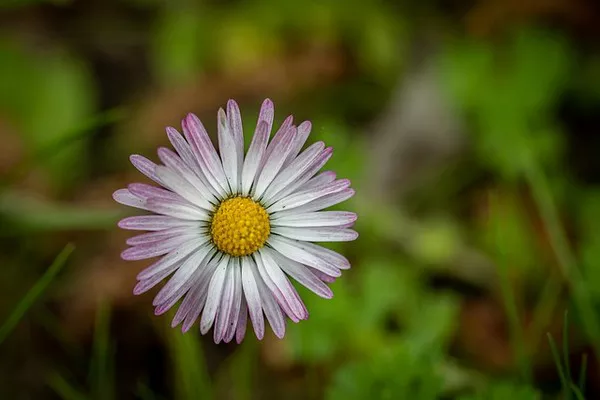In the world of flora, there exists a myriad of captivating blooms that never cease to amaze us with their beauty and symbolism. Among these, the cornflower (Centaurea cyanus) stands as a stunning example of nature’s artistry. With its vibrant blue petals and intricate history, the cornflower has intrigued botanists, gardeners, and flower enthusiasts for generations. In this article, we will delve into the world of cornflowers, exploring their origins, characteristics, uses, and cultural significance.
The Botanical Essence of Cornflowers
The cornflower, scientifically known as Centaurea cyanus, belongs to the family Asteraceae, which is home to several well-known flower species like daisies and sunflowers. This enchanting wildflower is native to Europe, though it has made its way to other parts of the world through cultivation and naturalization. Cornflowers thrive in temperate climates, particularly in regions with well-drained soil and plenty of sunlight.
Physical Characteristics of Cornflowers
Cornflowers are renowned for their striking appearance. They are characterized by slender stems that can grow up to 90 centimeters in height, topped with solitary flower heads. These flower heads are composed of a central disk surrounded by numerous slender, tubular florets, giving the impression of a small, intricate bouquet. The petals of cornflowers are most commonly a vibrant shade of blue, although they can also be found in other colors such as pink, white, and purple. The contrasting dark blue or black center adds to their allure.
The leaves of the cornflower are lance-shaped, with a grayish-green hue that complements the vivid petals. Overall, cornflowers possess a delicate charm that attracts not only humans but also various pollinators, such as bees and butterflies.
Cultural Significance of Cornflowers
Throughout history, cornflowers have held a special place in the hearts of many cultures around the world. Their significance varies from one region to another, but some common themes include:
Romantic Symbolism: Cornflowers have often been associated with love and romance. In the Victorian language of flowers, they represented true love and fidelity, making them a popular choice for bouquets and floral arrangements exchanged by lovers.
Remembrance: In some European countries, cornflowers were worn as a symbol of remembrance during World War I. Their presence in fields of battle earned them the nickname “bachelor’s button,” as they were often worn by young men who were separated from their loved ones due to the war.
Medicinal Uses: Traditionally, cornflowers were used in herbal medicine for their purported healing properties. They were believed to soothe eye irritations and reduce inflammation, and were even used as a mild diuretic.
Agricultural Role: In agriculture, cornflowers are considered both friend and foe. While they can be seen as weeds in crop fields, they also serve as an indicator of soil health and are known to attract beneficial insects like pollinators.
Cultivation and Care of Cornflowers
Cornflowers are relatively easy to grow, making them a popular choice for both novice and experienced gardeners. Here are some key considerations for cultivating these captivating blooms:
Planting Time: Cornflowers are typically sown in the spring or early autumn. They prefer cool temperatures and can withstand mild frosts, making them adaptable to a wide range of climates.
Soil Requirements: Well-drained, loamy soil is ideal for cornflowers. They thrive in soil that is slightly alkaline and can tolerate dry conditions, but consistent moisture will result in healthier plants and more abundant blooms.
Sunlight: Cornflowers are sun-loving plants that require at least six hours of sunlight per day. Choose a location in your garden that receives ample sunshine.
Spacing: When planting cornflowers, space them about 12 inches apart to allow for proper air circulation and prevent overcrowding.
Deadheading: Regular deadheading, or the removal of spent flowers, will encourage continuous blooming throughout the season.
Pests and Diseases: Cornflowers are relatively resistant to pests and diseases. However, keeping an eye out for aphids and powdery mildew is a good practice, and addressing any issues promptly will help maintain the health of your plants.
Uses and Applications of Cornflowers
Cornflowers have found their way into various aspects of human life, beyond their aesthetic appeal. Here are some notable uses and applications:
Culinary: The petals of cornflowers are edible and can be used as a decorative garnish for salads, desserts, and beverages. They have a mild, slightly sweet flavor, and their vibrant color adds a touch of elegance to dishes.
Natural Dyes: Historically, cornflowers were used as a source of natural blue dye for textiles and clothing. Although synthetic dyes have largely replaced them, the tradition of using cornflowers for dyeing still exists among some artisans.
Perfumery: Cornflowers have a subtle, pleasant scent, which has made them a valuable ingredient in perfumery. Their essence is often used to create fragrances that evoke feelings of freshness and tranquility.
Herbal Medicine: While not as commonly used in modern herbal medicine, cornflowers still have a place in traditional remedies. They are believed to have anti-inflammatory properties and are used in some herbal preparations.
Conclusion
The cornflower, with its striking beauty and rich history, is a flower that continues to captivate people around the world. From its romantic symbolism to its diverse uses in culinary and artisanal practices, the cornflower’s influence extends far beyond its natural habitat. Whether grown in gardens, adorning bouquets, or lending its essence to perfumes, this charming wildflower reminds us of the enduring connection between nature and culture. As we appreciate the enigmatic beauty of the cornflower, we also celebrate the profound ways in which it has touched our lives throughout history and continues to do so today.


